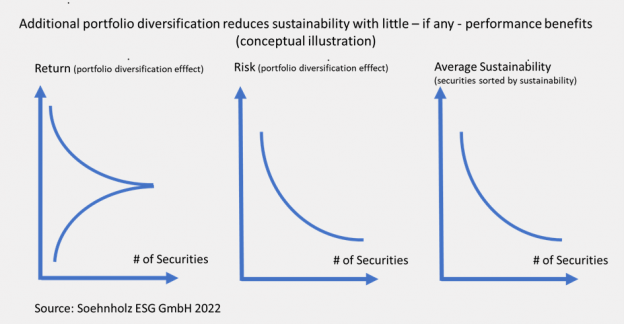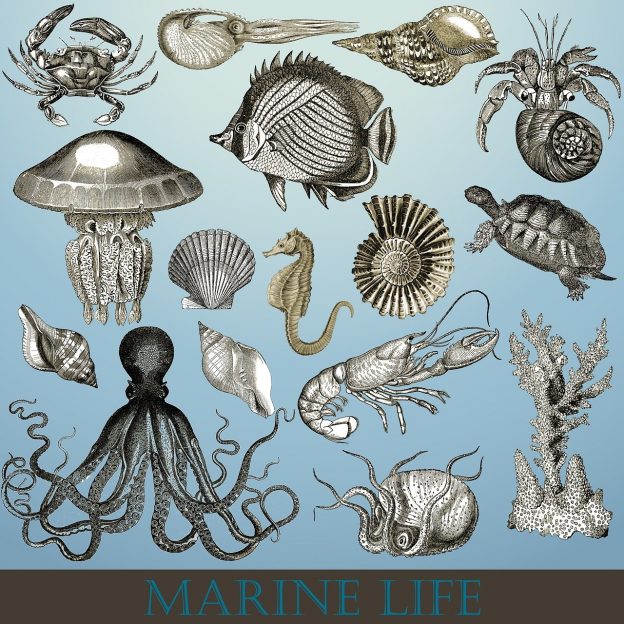AI pollution: Illustration from Pixabay by Gerd Altmann
AI pollution: 11x new research on varying environmental concerns, green investment market and growth, equity climate risk, AI for climate adaptation and AI pollution, ESG surveys, SDG scores and benefits of green corporate and government bonds (#shows SSRN downloads as of July 18th, 2024)
Ecoological and social research
Environmental concerns: “The development of global environmental concern during the last three decades by Axel Franzen and Sebastian Bahr as of July 10th, 2024 (#9): “… the average level of countries` environmental concern first decreased until 2010 but recovered in 2020 to the level observed in 1993. … Countries with higher GDP per capita tend to rank higher in terms of environmental concern. At the individual level, environmental concern is closely related to education, post-materialistic values, political attitudes, and individuals’ trust in the news media and in science” (p. 8).
Broad green market: Investing in the green economy 2024 – Growing in a fractured landscape by Lily Dai, Lee Clements, Alan Meng, Beth Schuck, Jaakko Kooroshy from LSEG as of July 9th, 2024: “The global green economy, a market providing climate and environmental solutions, … In 2023 it made a strong recovery from a sharp decline in 2022, with its market capitalisation reaching US$7.2 trillion in Q1 2024. However, headwinds remain, such as overcapacity issues and trade barriers related to renewable energy equipment and electric vehicle (EV) manufacturing. … Despite market volatility and increasingly complex geopolitical risks …, the green economy is expanding. Its long-term growth (10-year CAGR of 13.8%) outpaces the broader listed equities market. … Energy Efficiency has been by far the best-performing green sector, as well as the largest (46% of the green economy and 30% of the proceeds from green bonds), covering, for example, efficient IT equipment and green buildings. … Almost all industries generate green revenues. Technology is by far the largest sector (US$2.3 trillion of market capitalisation) and Automobiles has the highest green penetration rate (42%). … Newly issued green bonds now account for around 6% of the total bond offerings each year … meanwhile carbon-intensive bond issuance is approximately 2.5 times higher than green bond issuance each year. … Tech giants are concerned with their increasingly significant energy consumption and environmental footprints and are becoming the largest buyers of renewable energy. … energy-efficiency improvement, which is another area of potentially rapid growth, is needed in areas including chips and servers, cooling systems, hyperscale data centres and energy-demand management” (p. 4/5).
ESG investment research (in: AI pollution)
Green investment growth potential: Household Climate Finance: Theory and Survey Data on Safe and Risky Green Assets by Shifrah Aron-Dine, Johannes Beutel, Monika Piazzesi, and Martin Schneider as of July 1st, 2024 (#4, for a free download a NBER subscription is required): “This paper studies green investing … using high-quality, representative survey data of German households. We find substantial heterogeneity in green taste for both safe and risky green assets throughout the wealth distribution. Model counterfactuals show nonpecuniary benefits and hedging demands currently make green equity more expensive for firms. Yet, these taste effects are dominated by optimistic expectations about green equity returns, lowering firms‘ cost of green equity to a greenium of 1%. Looking ahead, we … find green equity investment could potentially double when information about green finance spreads across the population” (abstract). My comment: It would be interesting to have a similar studyon social investments which unfortunately are even less common than serious green investments(my approach with listed equities see My fund).
Wrong ESG-questions? Sustainability Preferences: The Role of Beliefs by Rob Bauer, Bin Dong, and Peiran Jiao as of July 12th, 2024 (#97): “In this study, we formally investigate index fund investors’ return expectations towards ESG funds … Our methodologies encompass both the widely used unincentivized Likert scale questions and the incentivized Exchangeability and Choice Matching Methods. … Utilizing unincentivized Likert scale methods, we observe that a majority of investors expect that ESG funds financially underperform relative to conventional funds. Conversely, when applying the incentivized … methods, investors report consistent beliefs that are in contrast with their beliefs from the unincentivized Likert scale. What gives us additional confidence is that our incentivized methods elicit beliefs closer to investors’ true belief is that these beliefs also have a significant and meaningful impact on investors’ allocation choices. … the significant influence of investors’ return expectations on their allocation to SRIs underscores the importance of financial motivations in investment decisions related to SRIs. Therefore, return expectations play an important role in investors’ decisions involving SRI“ (p. 26 and 28).
Equity climate risk: How Does Climate Risk Affect Global Equity Valuations? A Novel Approach by Riccardo Rebonato, Dherminder Kainth, and Lionel Meli from EDHEC as of July 2024: “1. A robust abatement policy, i.e., roughly speaking, a policy consistent with the 2°C Paris-Agreement target, can limit downward equity revaluation to 5-to-10%. 2. Conversely, the correction to global equity valuation can be as large as 40% if abatement remains at historic rates, even in the absence of tipping points. … 3. Tipping points exacerbate equity valuation shocks but are not required for substantial equity losses to be incurred” (p. 6).
Equity climate risk return effects: The Effects of Physical and Transition Climate Risk on Stock Markets: Some Multi-Country Evidence by Marina Albanese, Guglielmo Maria Caporale, Ida Colella, and Nicola Spagnolo as of July 3rd, 2024 (#20): “This paper examines the impact of transition and physical climate risk on stock markets … for 48 countries from 2007 to 2023 … The results suggest a positive impact of transition risk on stock returns and a negative one of physical risk, especially in the short term. Further, while physical risk appears to have an immediate impact, transition risk is shown to affect stock markets also over a longer time horizon. Finally, national climate policies seem to be more effective when implemented within a supranational framework as in the case of the EU-28“ (abstract).
Adaptation AI: Harnessing AI to assess corporate adaptation plans on alignment with climate adaptation and resilience goals by Roberto Spacey Martín, Nicola Ranger, Tobias Schimanski, and Markus Leippold as of July 2nd, 2024 (#293): “We build on established sustainability disclosure frameworks and propose a new Adaptation Alignment Assessment Framework (A3F) to analyse corporate adaptation and resilience progress. We combine the framework with a natural language processing model and provide an example application to the Nature Action 100 companies. The pilot application demonstrates that corporate reporting on climate adaptation and resilience needs to be improved and implies that progress on adaptation alignment is limited. Further, we find that … integration of nature-related risks and dependencies is low“ (abstract). My comment: I miss studies on the experience with AI of ESG “rating” agencies. My data supplier Clarity.ai seems to be rather good in this respect, see Clarity AI named a leader in Forrester Wave ESG 2024 – Clarity AI
AI pollution: AI and environmental sustainability: how to govern an ambivalent relationship by Federica Lucivero as of March 12th, 2024 (#23): “While AITs hold promise in optimizing supply chains, circular economies, and renewable energy, they also contribute to significant environmental costs …. The concept of „digital pollution“ emphasizes the physical and ecological impacts of AI infrastructures, data storage, resource consumption, and toxic emissions. … “ (abstract).
Impact investment research (in: AI pollution)
Stable SDG scores? Sustainability Matters: Company SDG Scores Need Not Have Size, Location, and ESG Disclosure Biases by Lewei He, Harald Lohre and Jan Anton van Zanten from Robeco as of July 11th, 2024 (#65): “We investigate whether SDG scores, which evaluate companies’ alignment with the 17 UN Sustainable Development Goals, exhibit similar biases that affect ESG ratings. Specifically, we document that SDG scores need not be influenced by size, location, and disclosure biases” (abstract). My comment: SDG-scores typically include very similar information as ESG scores. It would be interesting to investigate the value add of SDG-scores to ESG-scores. I prefer SDG-revenues as indicators for SDG-alignment.
Green impact: Greenness Demand For US Corporate Bonds by Rainer Jankowitsch, Alexander Pasler, Patrick Weiss, and Josef Zechner as of July 11th, 2024 (#26): “We document that institutional investors have a positive demand for greener assets. … In particular, the Paris Agreement signed at COP21 is accompanied by the highest greenness demand, and the US withdrawal from the same policy is associated with a significant decrease in greenness demand. … Bonds of firms with high environmental performance have, on average, significantly lower yields due to greenness demand, and vice versa for brown bonds. Furthermore, our findings reveal that insurance companies, with their consistent positive greenness demand, significantly drive these valuation effects. … Our counterfactual analyses allow us to quantify both the losses browner portfolios experience and the benefits for investors with a positive greenness tilt. These results point to the potential regulatory risks faced by investors due to uncertain future policies … firms can derive significant yield reductions from improving their environmental performance. These benefits are larger for the brownest firms, and the benefits rise with greenness demand across the environmental spectrum. Despite this fact, we only find evidence that green firms react to changes in demand by improving their greenness in periods following high greenness demand, whereas brown firms do not. … we also show that green firms react to higher greenness demand by raising more capital via corporate bonds than their brown counterparts, as the former issue bonds more frequently and choose higher face values“ (p. 43/44). My comment: My approach of investing only in the companies with very good ESG-scores (see e.g. SDG-Investmentbeispiel 5) seems to be OK
Green catalysts: Sovereign Green Bonds: A Catalyst for Sustainable Debt Market Development? by Gong Cheng, Torsten Ehlers, Frank Packer, and Yanzhe Xiao from the International Monetary Fund as of July 12th, 2024 (#12): “… the sovereign (debt issuance, Sö) debut is associated with an increase in the number and the volume of corporate green bond issues. The stricter a country’s climate policy or the less vulnerable the country is to climate risks, the stronger this catalytic effect of its sovereign debut. … sovereign issuers entering the green and labelled bond market promote best practice in terms of green verification and reporting, inducing corporate issuers to follow suit. … The debut is a distinctive event for the liquidity and pricing of corporate green bonds; it increases liquidity and diminishes yield spreads in the corporate green bond markets. The same impact is not observed for subsequent sovereign green bond issues after the debut. Our empirical study shows that sovereigns’ entry into the sustainable bond market can spur corporate sustainable bond market development, even when sovereigns are latecomers to the markets. Sovereigns entering the sustainable bond market help to stimulate more growth in private sustainable bond markets as well as improve market liquidity and pricing. We also see scope for sovereign issuers to improve further market transparency, in line with the recommendations of NGFS (2022). Some jurisdictions have introduced supervisory schemes for green verification providers. To standardise or make mandatory impact reporting is another important step that might be considered in future regimes“ (p. 19). My comment: Currently, I only use bonds of multilateral development banks instead of government bonds for ETF allocation portfolios. But this research shows that giving money to Governments which do strange things from a sustainability perspective (= all) may be OK if green/social/sustainable bonds are used.
………………………………………………………………………………………………………………………………………..
Werbehinweis (in: AI pollution)
Unterstützen Sie meinen Researchblog, indem Sie in meinen globalen Smallcap-Investmentfonds (SFDR Art. 9) investieren und/oder ihn empfehlen. Der Fonds konzentriert sich auf die Ziele für nachhaltige Entwicklung (SDG: Investment impact) und verwendet separate E-, S- und G-Best-in-Universe-Mindestratings sowie ein breites Aktionärsengagement (Investor impact) bei derzeit 29 von 30 Unternehmen: Vgl. My fund.
Zur jetzt wieder guten Performance siehe zum Beispiel Fonds-Portfolio: Mein Fonds | CAPinside










